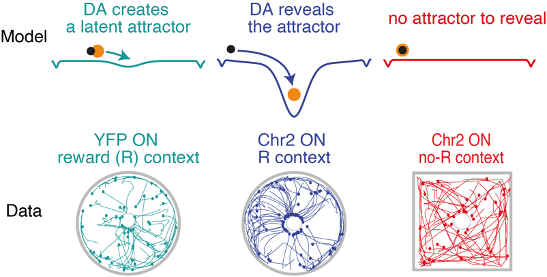The first time we climb an apple tree, by chance, we pick a juicy fruit. We then associate the action of climbing an apple tree with the reward (a delicious apple) it brings. Dopamine plays an essential role in this learning process, acting as a reward signal.
But seeing an apple tree doesn’t automatically trigger the desire to climb it again. It’s when we’re hungry, or want to play, or share our discovery – in other words, if we’re motivated – that we’ll go in search of an apple tree. The role of dopamine in motivation is less clear. Some “reinforcement learning” theories see no role for dopamine in motivation, once the association between action and reward has been learned. Other “motor” theories propose that dopamine facilitates all voluntary movements, without specificity.
In a study carried out in collaboration with the Institut de Biologie Paris Seine and the Institut des Systèmes Intelligents et de Robotique at Sorbonne University, Jérémie Naudé in the team “Pathophysiology of synaptic Pathophysiology of synaptic transmission” led by Julie Perroy proposes a new theory, based on the notion of attractors. To trigger an action reliably, a certain state of brain activity has to be reached from different initial states (in the example, going in search of an apple tree, regardless of what we were thinking at the time). We then say that the group of neurons corresponding to the learned action is an “attractor” of brain activity.
The authors of the article have proposed that the effect of dopamine on synaptic plasticity creates an attractor that is only latent, or potential. When we are motivated, the release of dopamine reveals this attractor and brain activity is able to reach this attractor, prompting us to perform the action (looking for the apple tree in our example).
This theory was then tested in mice, by artificially (optogenetically) stimulating their dopamine neurons, in two different environments, one where the mice had learned that there was a reward, and another environment with no reward. In the first environment, artificial stimulation of the dopamine neurons suddenly and specifically attracted the mice to the location associated with a reward, even from very distant positions. In the no-reward environment, artificial stimulation of the dopamine neurons had no visible effect (as there was no attractor to reveal).
This work was accepted for publication in Nature Communications.

Top: diagram of the attractor dynamics in the model. The orange dot is the animal’s goal, moving along a potential energy landscape whose minima (attractors) are goals in the environment. The black dot is the animal’s behavior, which follows its goal. The first effect of dopamine is to build a latent attractor, and the second effect of dopamine is to reveal it. Bottom: experimental test of the theory. Optogenetic stimulation of dopaminergic neurons increases the propensity of animals to visit a previously rewarded central location (blue) but has no motor effect in an unrewarded context (red).


